The Yamal peninsula stretches from northern Siberia to the Kara Sea. To the east are the shallow waters of the Gulf of Ob, while to the west is Baydaratskaya Bay, an expanse of water covered in ice for most of the year. In the indigenous Nenets language, Yamal means ‘the end of the world’. We are in a remote, windswept area, covered with ice and dwarf shrubs. We’re in the home of the Nenets people, reindeer herders for over a thousand years. Today about 40,000 remain, living in the Arctic region and still breeding reindeer to survive.
The Nenets herders have always travelled with their reindeer, travelling along ancient migratory routes. During the winter, when temperatures can drop as low as -50 °C, most Nenets take their reindeer to pastures of moss and lichen in the southern forests. However, in the summer, when the midnight sun turns night into day, they leave the larch and willow trees behind and migrate northwards.
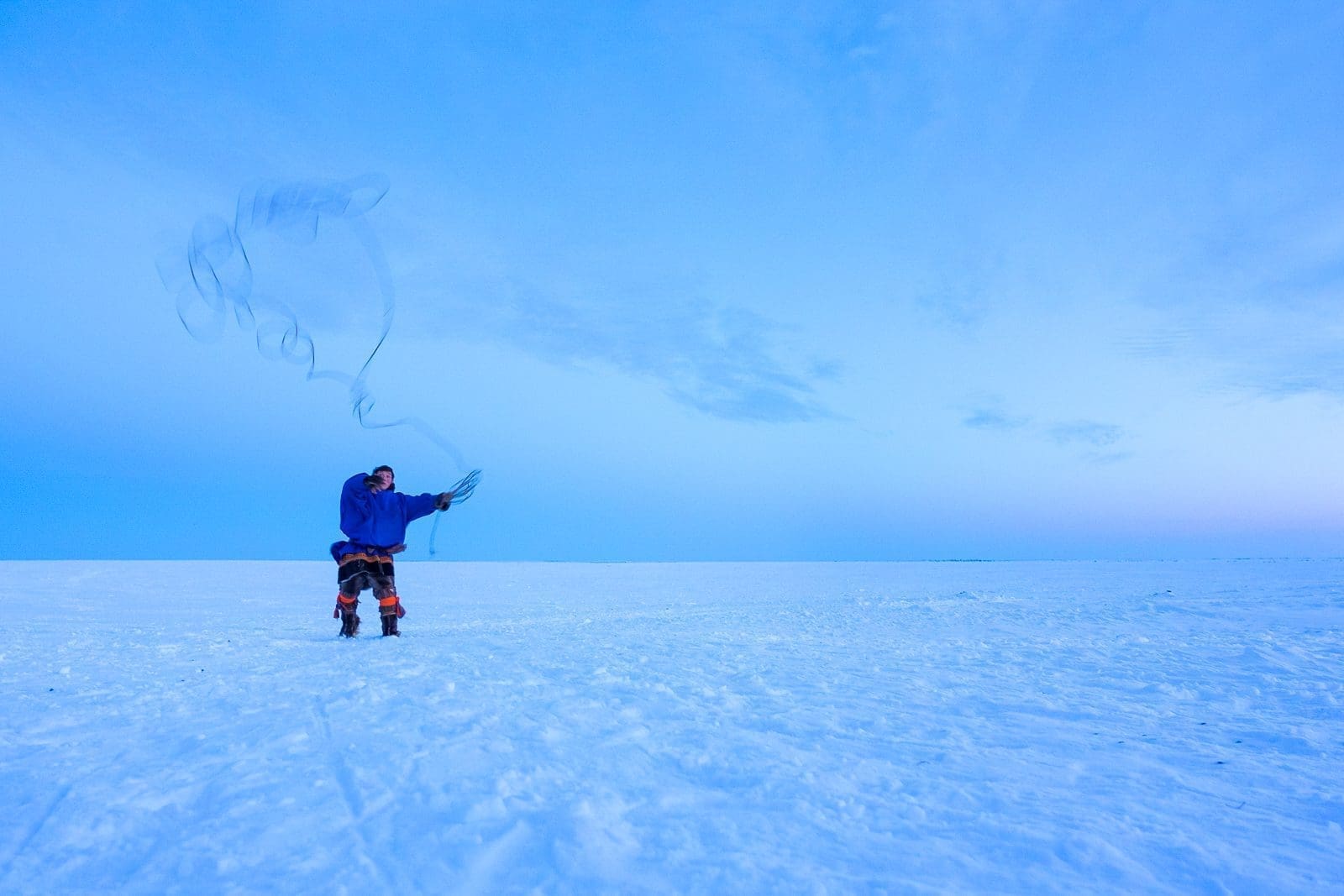
Migratory routes under threat
Today, the migration routes of the Nenets are affected by the infrastructure associated with the extraction of underground resources, mainly gas destined – among others – for Europe. The amounts of gas stored underground in Siberia are enormous and so valuable that the Nenets’ presence and needs are inconvenient. The tundra has become difficult for reindeer and their herders to cross. Increasing pollution threatens the quality of pastures and waters, where fish are slowly dying. The Nenets fear that due to the increasing exploitation of this territory, they will no longer be able to migrate. It will be the end for them when they can no longer do that.
Due to thawing permafrost, carcasses of animals buried 80 years ago following an epidemic have resurfaced in some areas, causing new anthrax epidemics among the population. Furthermore, a few years ago, a shepherd discovered the perfectly preserved remains of a baby mammoth just six months old, buried in the permafrost of the Yamal peninsula and resurfaced due to the thaw. He is believed to have died 42,000 years ago.
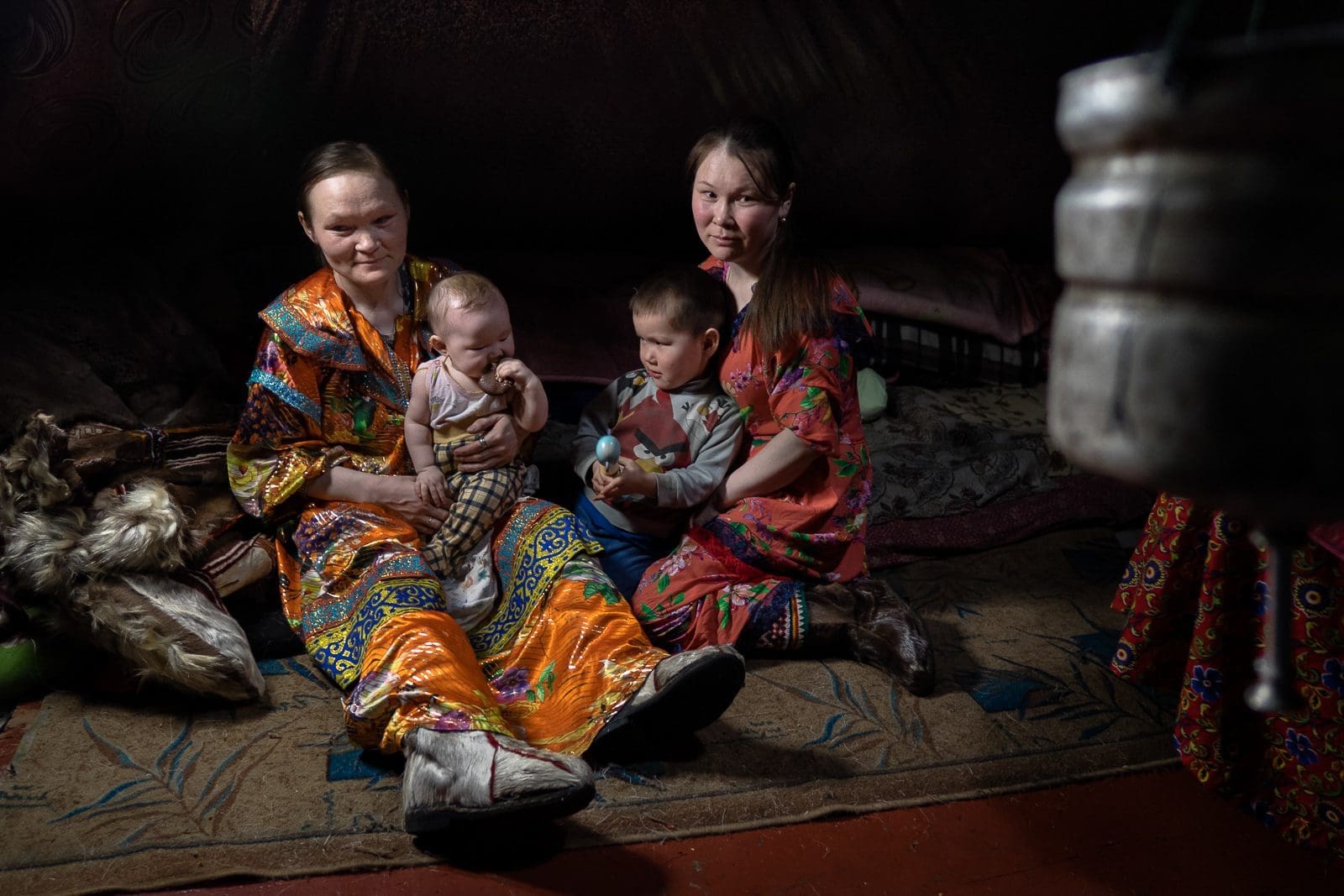
Life in harmony with a borderline environment
Life in the neighbouring cities has a different look and feel. Often life in the chum – a type of hut with a conical structure – is replaced by a life spent inside containers to move around according to the needs of the gas extraction companies. Mining companies armour large areas to protect their plants, but they rape the free nature of this beautiful land.
I spent about ten days with them, living according to the rhythms imposed by a hostile nature but in unthinkable harmony unless you touch it. I was deeply impressed by this family that was able to live in perfect symbiosis with such a borderline polar environment.

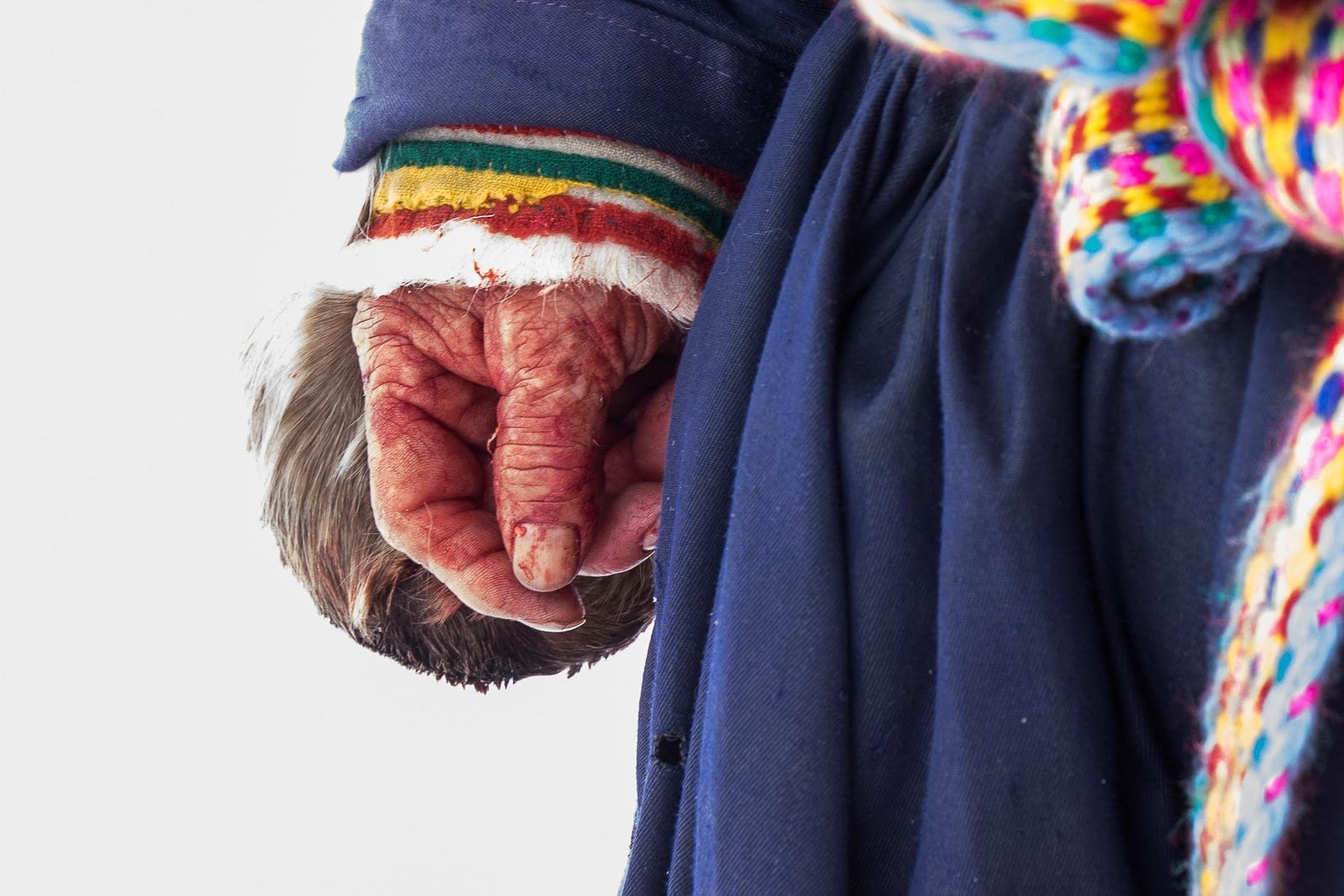
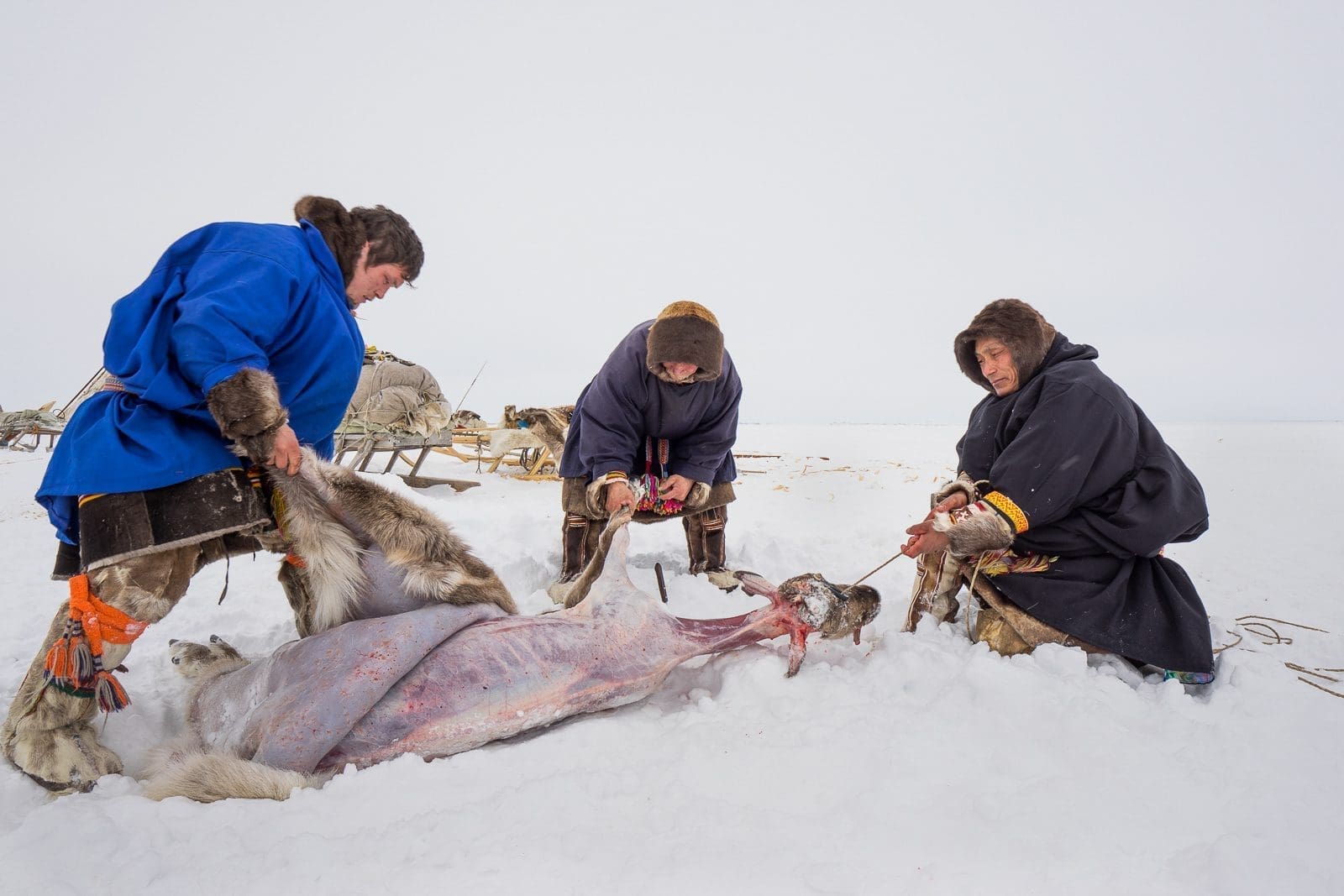
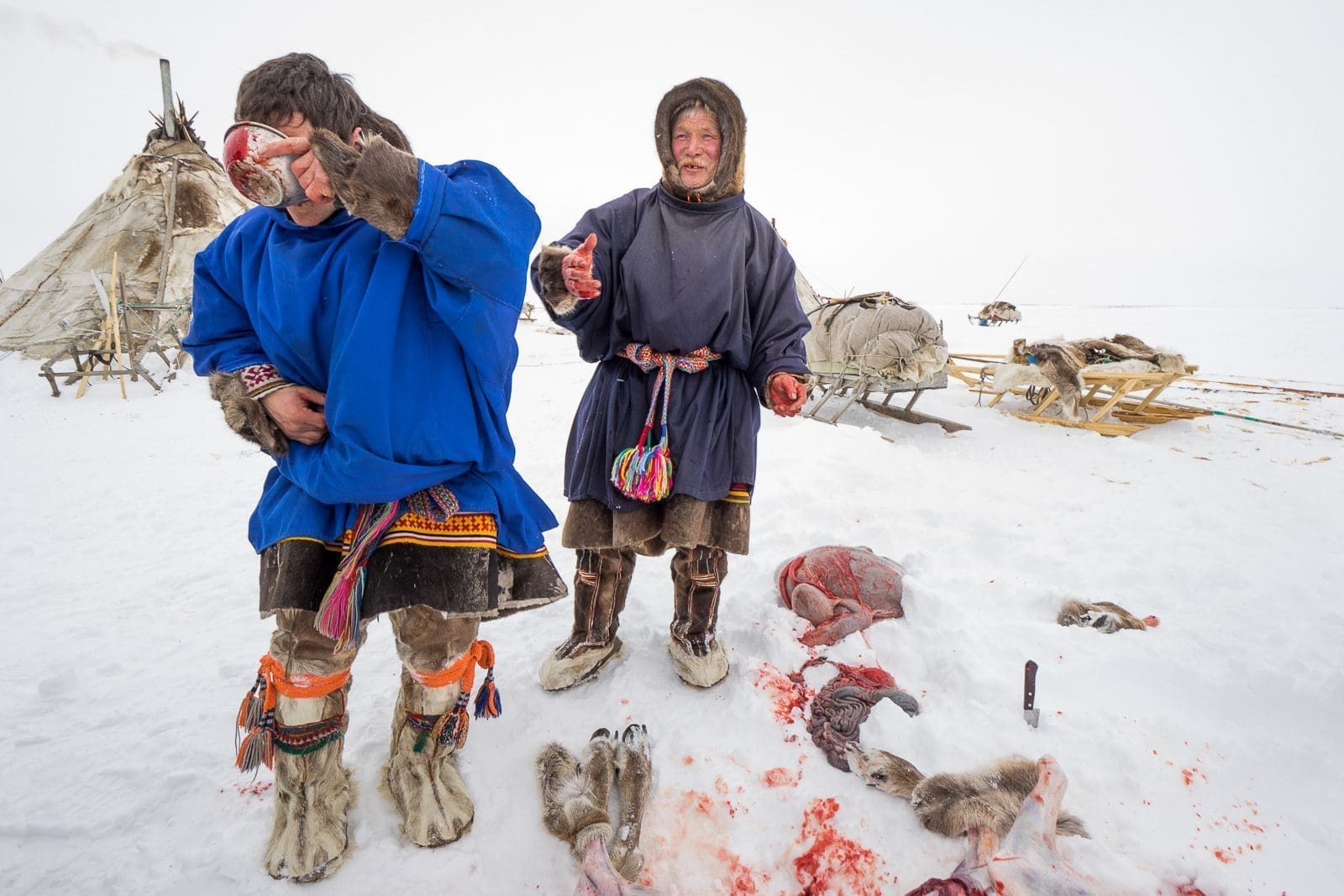

For the Nenets, the land and their reindeer herds remain vitally important both for the maintenance of their collective identity and for survival. Reindeer is their home, their food, their warmth and their means of transport. Nenets’ coats are made of reindeer skin. The laces are made from tendons. The tools and parts of the slides are made from bones. The tent covers are also made of reindeer skin, mounted on heavy poles.
The Nenets eat fish such as white salmon and muksun, a silvery white fish, and collect mountain blueberries during the summer months. Reindeer meat, however, remains the most crucial element of the Nenets’ diet. It is eaten raw, frozen or boiled, together with the blood of a freshly slaughtered reindeer, as it is rich in vitamins. Each Nenets has a sacred reindeer that cannot under any circumstances be harnessed or slaughtered until it is no longer able to walk.
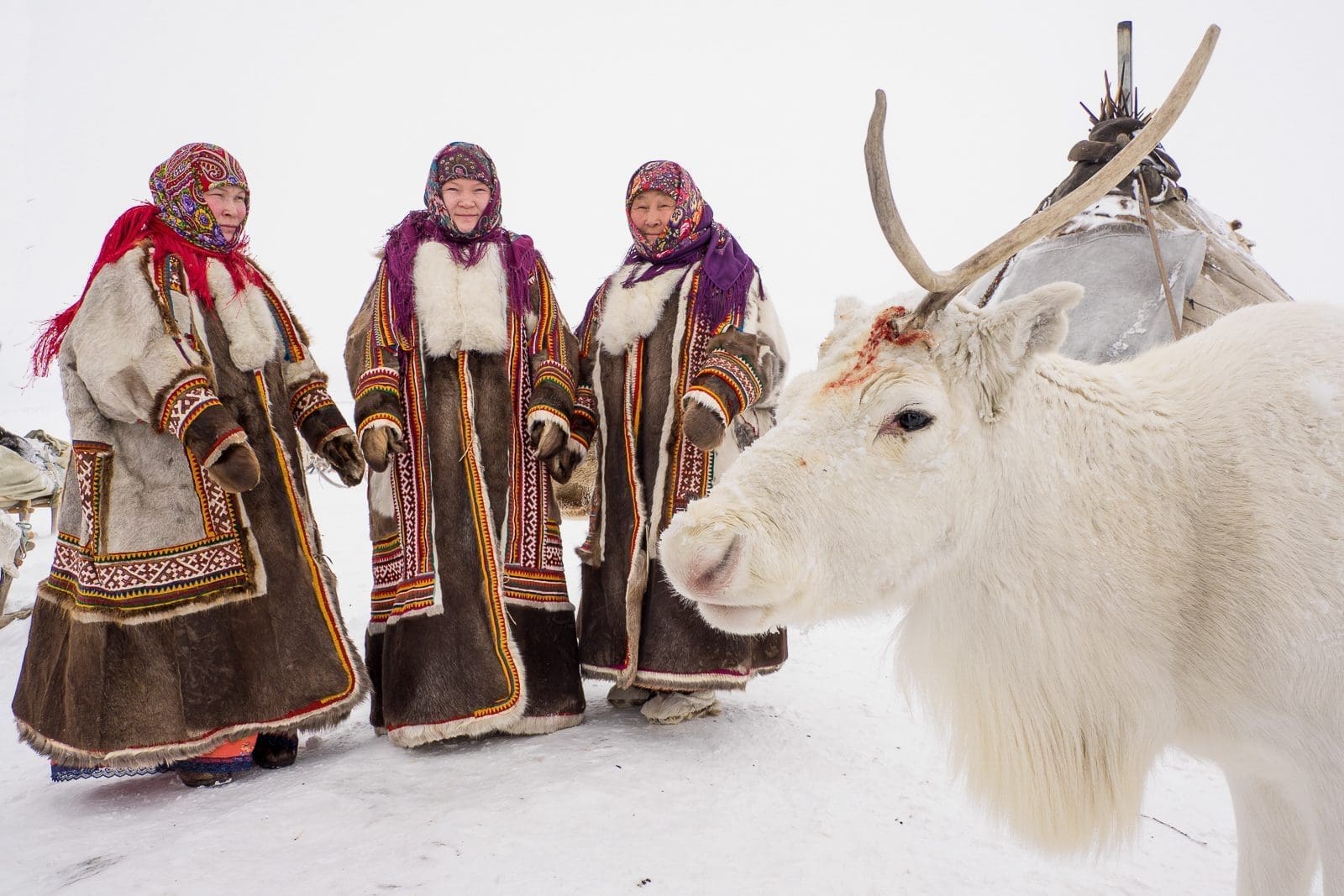
A tradition handed down by Nenets women
As in many native cultures, there are also people among the Nenets who are called upon to pass on life lessons from generation to generation. Here it is the women who, preserving traditional customs and dealing with contemporary problems, tell children the stories of their ancestors.
When the men go hunting, the women educate the children on the fundamental values of their people to maintain order and encourage safety from an early age, ensuring that the youngest know how to critically analyse dangerous situations from an early age and connect with the spiritual essence of the culture they were born into.



